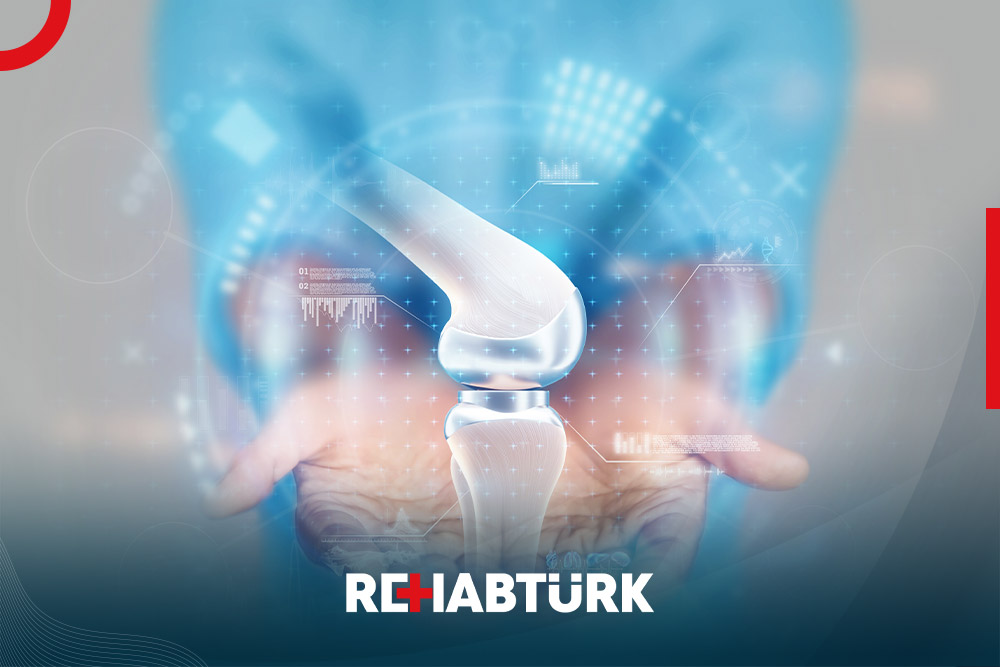Anterior cruciate ligament reconstruction in Türkiye
To perform Anterior cruciate ligament reconstruction in Türkiye, you have to keep in mind that this operation requires physical therapy afterwards.
Whatever the severity of the rupture, you should not worry, the success of the anterior cruciate ligament reconstruction in Türkiye is guaranteed if you follow the instructions of the attending physician after the operation.
You can contact REHABTÜRK doctors for more inquiries and to estimate the case with the cost of surgery
What are the anterior cruciate ligament injuries?
Anterior cruciate ligament injuries are common among people who play sports. The anterior cruciate ligament (ACL) is a band of tissue inside the knee. It gets damaged when it stretches. This can happen if you turn sharply or move suddenly while running or jumping.
If you strain your anterior cruciate ligament or tear it slightly, it may heal over time with the help of a doctor and physical therapy. But if it’s completely torn, you may need to replace it – especially if you’re young and active or an athlete who wants to keep playing sports. If you’re more or less active, your doctor may recommend treatments that don’t require surgery.
Types of anterior cruciate ligament surgery

When your doctor removes the torn ACL, he puts the tendon back in place. (Tendons attach muscles to bones.) The goal is to stabilize your knee again and give it the full range of motion it had before you got hurt.
When the tendon is placed in your knee, it is known as a graft. Three types of grafts may be used with ACL surgery:
- Autocraft. Your doctor uses a tendon from somewhere else in your body (such as your other knee, hamstring, or hip).
- allogenic. This type of graft uses tissue from another person (deceased donor).
- artificial bait. This is when synthetic materials replace the tendon. Silver fiber and silk were among the first fibers used (in the early part of the 20th century). More advanced options are available now, such as carbon fiber and Teflon, but researchers are still working to find the best materials for ACL replacements.
What happens during the anterior cruciate ligament reconstruction process?
Your doctor will remove the torn ligament from your knee and replace it with new tissue. The goal is to stabilize your knee again and give it the full range of motion it had before it was hurt.
Doctors usually use arthroscopic surgery on the anterior cruciate ligament. This means that they insert small instruments and a camera through small cuts around your knee. There is less skin scarring with this method compared to open knee surgery.
How is the anterior cruciate ligament reconstruction performed?
Once your doctor has removed the torn ACL, he places a tendon in its place. (Tendons connect muscles to bones). He or she may take a tendon from somewhere else in the body (such as the knee, hamstring, or thigh) during surgery. Or he may use one from a deceased donor. Both types work well. When the tendon is placed inside your knee, it is known as a graft.
Your doctor will place the ligature in the correct location, and will drill two holes, called “tunnels”. He will drill one into the bone above your knee and another into the bone below it. Next, he will put screws into the tunnels and install the router in place. It serves as a kind of bridge over which the new ligament grows as it heals. It can take several months for a new ACL to fully grow back.
Risks of anterior cruciate ligament surgery
As with any type of surgery, there are risks with ACL surgery. In general, surgery may cause:
- Bleeding from the wound
- infection
- shock
- blood clots
- Breathing problems
- trouble urinating
- reaction to anesthesia
With ACL surgery in particular, the risks include:
- knee pain
- knee stiffness
- The taste does not heal well
- Operation failure after returning to physical activity
What can I expect after anterior cruciate ligament reconstruction?
The procedure takes about an hour. You will receive general anesthesia so that you will not feel or remember the surgery. Most people are able to go home the same day.
You will probably have to use crutches to take pressure off your knee. Before you leave the hospital, you will learn how to change the dressing on your wound. You may be asked to keep your knee elevated on pillows, ice it, and wrap it with an ice pack to maintain pressure. When the ACL begins to heal, your doctor should send you for physical therapy . This will help strengthen the muscles and ligaments. After that, you should get back to doing the things you love to do in a few months.
Treatment in Türkiye:
The medical staff of surgical teams, doctors and consultants in REHABTÜRK can provide the best treatment options and free consultations – by striving to keep abreast of the latest medical technologies and methods.

